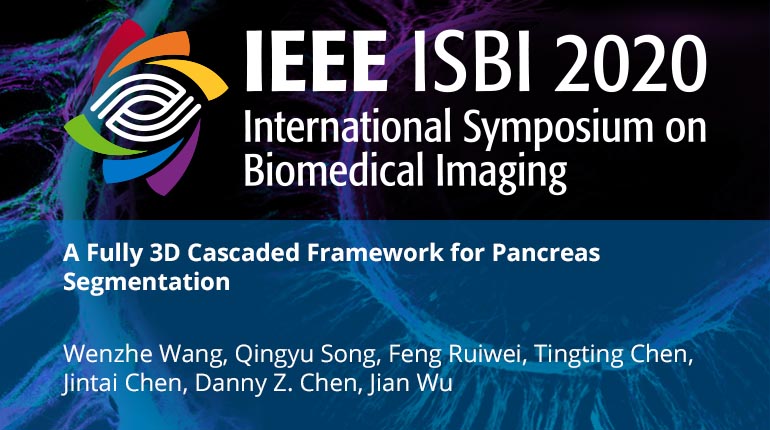
Already purchased this program?
Login to View
This video program is a part of the Premium package:
A Fully 3D Cascaded Framework for Pancreas Segmentation
- IEEE MemberUS $11.00
- Society MemberUS $0.00
- IEEE Student MemberUS $11.00
- Non-IEEE MemberUS $15.00
A Fully 3D Cascaded Framework for Pancreas Segmentation
Convolutional Neural Networks (CNNs) have achieved remarkable results for many medical image segmentation tasks. However, segmenting small and polymorphous organs (e.g., pancreas) in 3D CT images is still highly challenging due to the complexity of such organs and the difficulties in 3D context information learning restricted by limited GPU memory. In this paper, we present a Fully 3D Cascaded Framework for pancreas segmentation in 3D CT images. We develop a 3D detection network (PancreasNet) to regress the locations of pancreas regions, and two different scales of a 3D segmentation network (SEVoxNet) to segment pancreas in a cascaded manner based on the detection results of PancreasNet. Experiments on the public NIH pancreas segmentation dataset show that we achieve 85.93% in the mean DSC and 75.38% in the mean JI, outperforming state-of-the-art results and with the fastest inference time ever reported (~200 times faster).
Convolutional Neural Networks (CNNs) have achieved remarkable results for many medical image segmentation tasks. However, segmenting small and polymorphous organs (e.g., pancreas) in 3D CT images is still highly challenging due to the complexity of such organs and the difficulties in 3D context information learning restricted by limited GPU memory. In this paper, we present a Fully 3D Cascaded Framework for pancreas segmentation in 3D CT images. We develop a 3D detection network (PancreasNet) to regress the locations of pancreas regions, and two different scales of a 3D segmentation network (SEVoxNet) to segment pancreas in a cascaded manner based on the detection results of PancreasNet. Experiments on the public NIH pancreas segmentation dataset show that we achieve 85.93% in the mean DSC and 75.38% in the mean JI, outperforming state-of-the-art results and with the fastest inference time ever reported (~200 times faster).
 Cart
Cart Create Account
Create Account Sign In
Sign In





